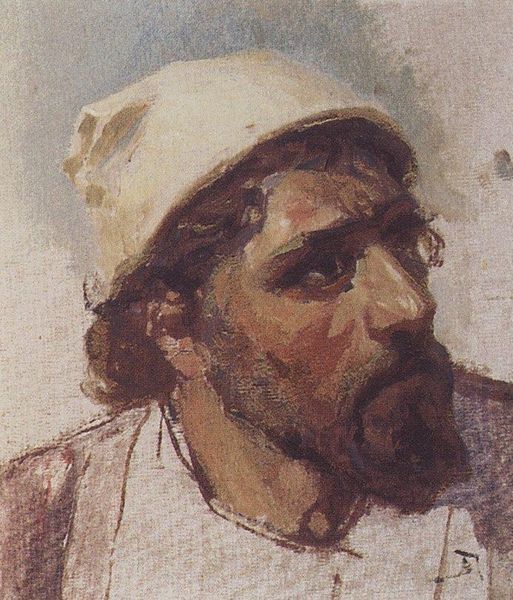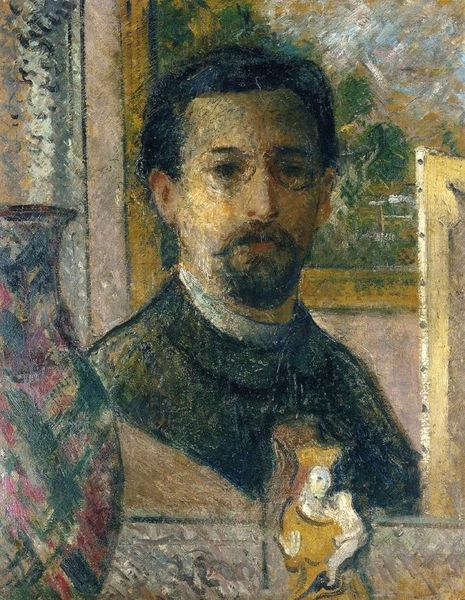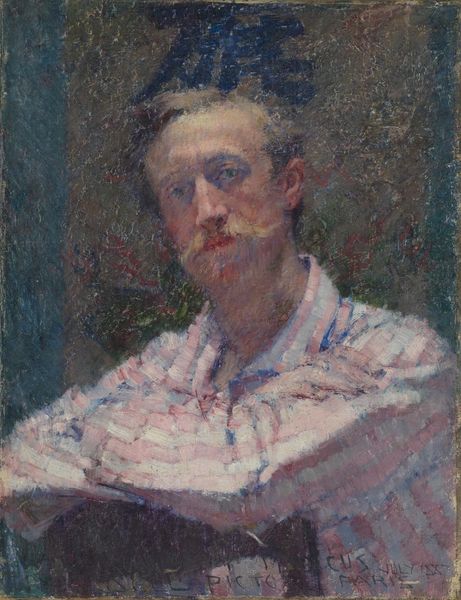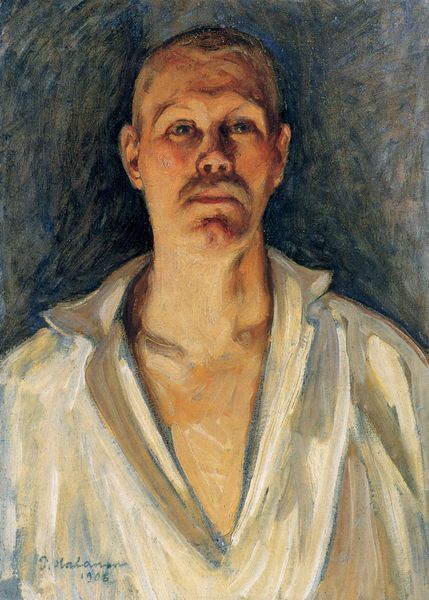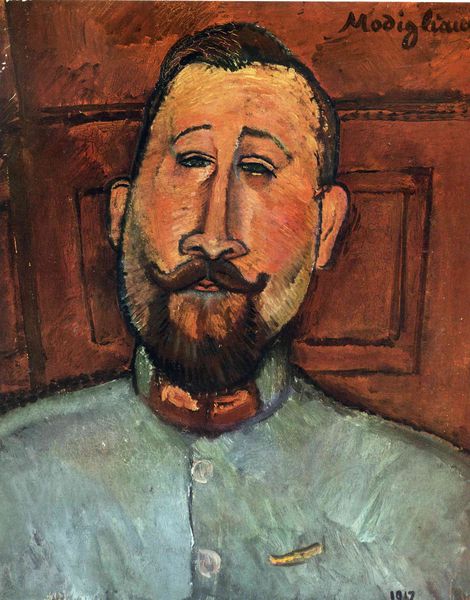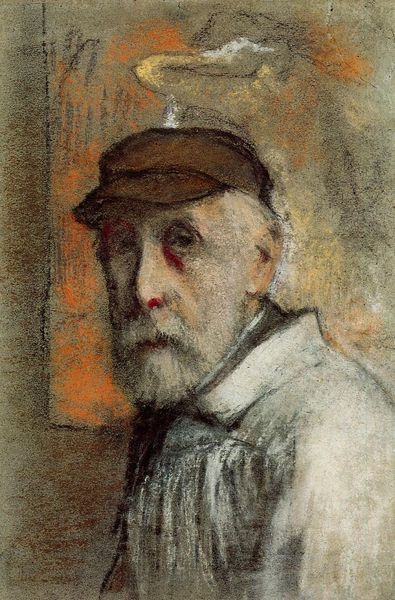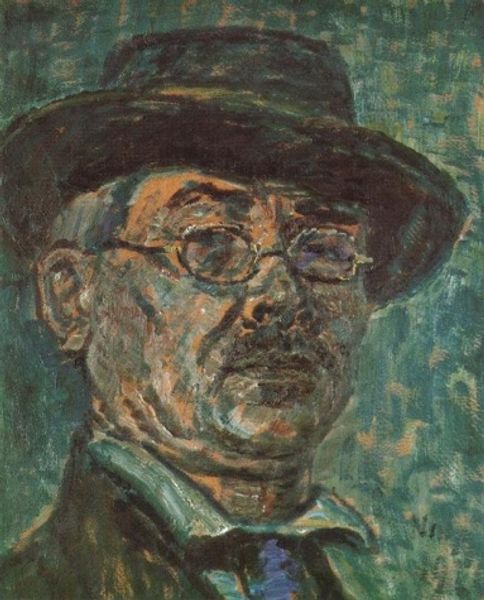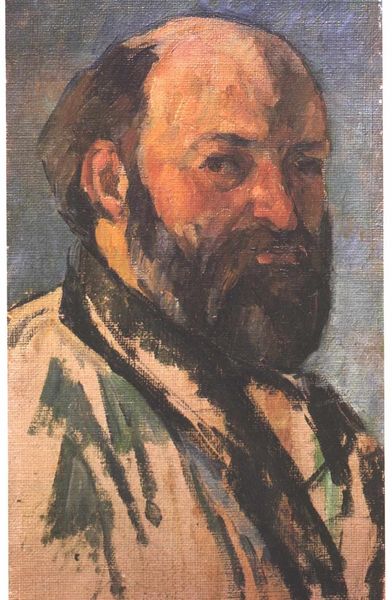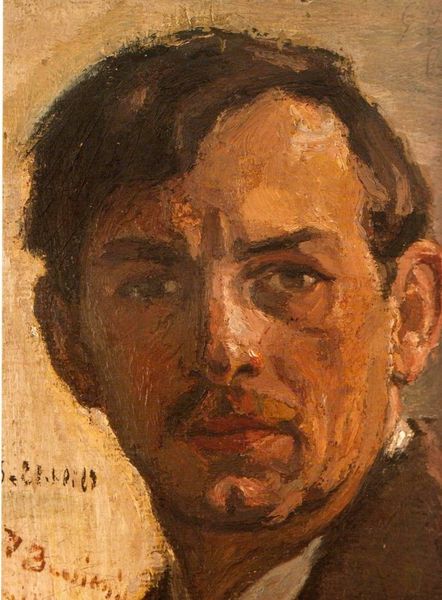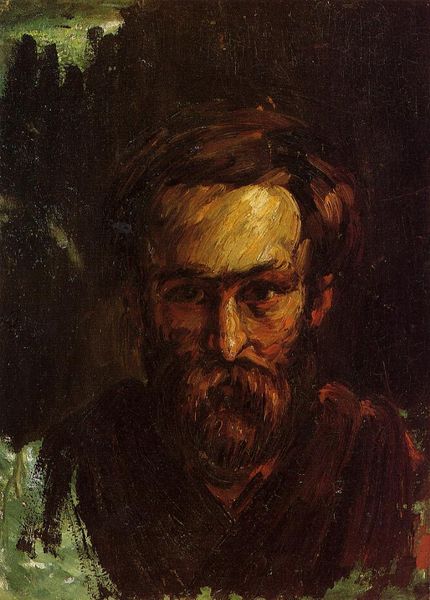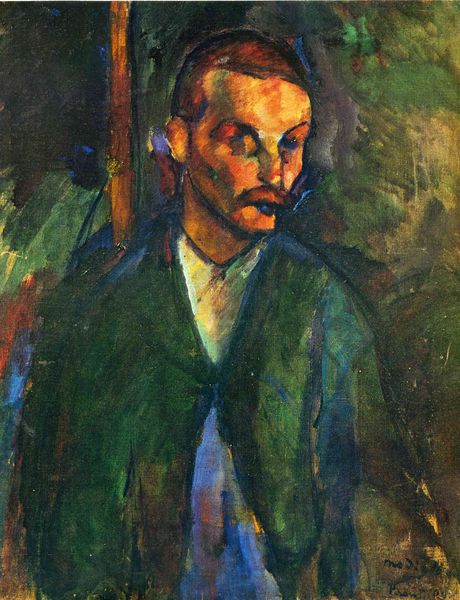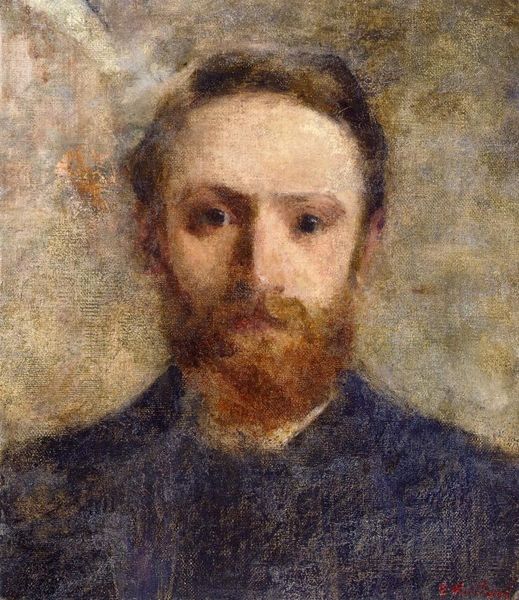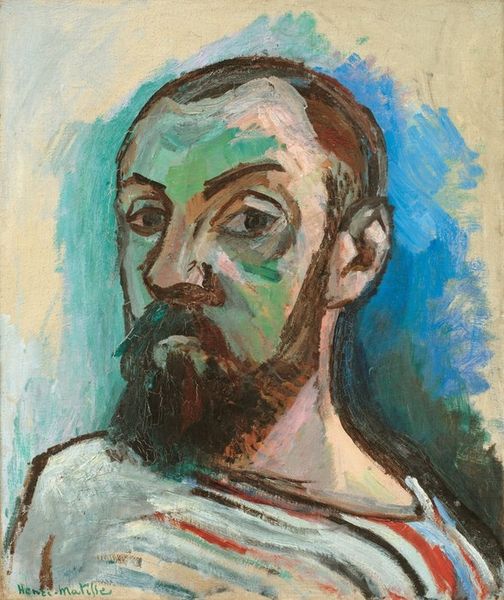
oil-paint
#
portrait
#
self-portrait
#
oil-paint
#
oil painting
#
portrait reference
#
famous-people
#
male-portraits
#
post-impressionism
#
modernism
Copyright: Public domain
Curator: Looking at this self-portrait, dated 1903, by Paul Gauguin, one immediately senses a weariness, doesn't one? The eyes behind those spectacles seem to carry a considerable weight. Editor: Indeed. There's a pronounced directness, a willingness to be seen that feels like a confrontation, or a challenge. But this image makes me wonder what message about aging Gauguin wants to share here. Curator: Gauguin was deeply engaged with representing the self, but always in relation to the 'other' and within shifting societal perceptions of identity. Consider his own positioning as an exile figure seeking an authentic existence separate from European structures of power. We see an oil on canvas portrait of Gauguin near the end of his life, in exile in French Polynesia. It's impossible not to consider the weight of colonialism within the narrative of Gauguin's journey and subsequent paintings. Editor: Absolutely, it would be naïve not to recognize the implications of his move and art, while he seeks to redefine notions of civilization from what was considered as "uncivilized". The painting itself displays a looseness of brushstroke characteristic of post-impressionism, yet the gaze remains piercing. He's presenting himself, warts and all, so to speak. How do you feel about the use of warm, almost earthy tones against the cool blues in the background? Curator: It feels like a symbolic representation of the internal conflicts he's trying to negotiate. Warmth represents that desired 'authentic self' discovered through supposedly primal cultures while cooler blues stand for modernity, which would translate in alienation. But Gauguin does not shy away from depicting reality, nor portraying age in a favorable light. Editor: To a certain extent he reifies conventional portrayals and male self regard, even though this could also reflect the harshness and isolation in which he lived. The painting itself doesn't flatter. He presents a candid picture of the artist in old age that still raises valid social considerations and awareness of Western society from an intersectional perspective. Curator: Yes, I think in looking closely, there's a vulnerability made stark by the aged state. Editor: In a broader public role, such works provoke challenging dialogues about perception and selfhood, reminding us how potent artistic interpretation can be when applied critically to matters personal and collective. Curator: Ultimately, viewing Gauguin’s self-portrait prompts reflection upon the complexities of his practice within ever evolving ideological structures, in his quest to define the self and challenge artistic convention.
Comments
No comments
Be the first to comment and join the conversation on the ultimate creative platform.
